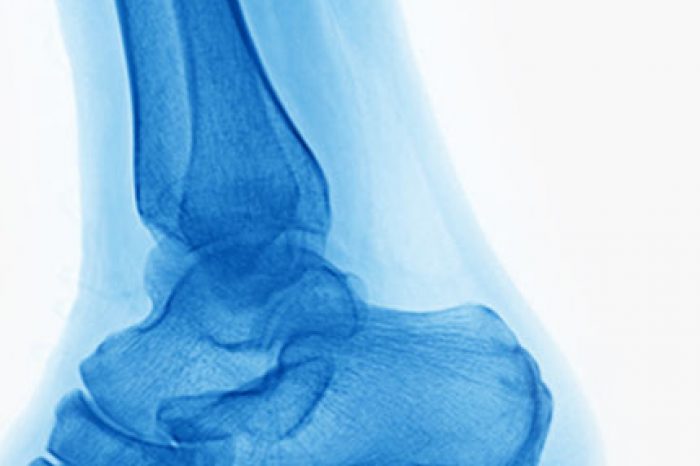Introduction to Shockwave Therapy for Tendons
If you’re struggling with tendon pain, you may have heard about shockwave therapy as a potential solution. This non-invasive treatment is gaining popularity among patients with chronic tendon injuries, offering pain relief and enhanced healing. But what exactly is it, and how does it work?
What Is Shockwave Therapy?
Shockwave therapy, also known as extracorporeal shock wave therapy (ESWT), uses high-energy acoustic waves to stimulate healing in damaged tendons. Originally developed for kidney stone treatment, it has become a widely used method for treating musculoskeletal conditions, particularly tendon-related injuries.
How Shockwave Therapy Works for Tendons?
Shockwave therapy works by inducing mechanical stress on the tendon tissue, which leads to a cascade of biological responses. These include::
- Increasing blood flow to the injured area
- Shockwave promotes neovascularization, enhancing blood flow and nutrient
delivery to the affected tendon, which aids in the healing process [Santamato et al, 2019].
- Breaking down scar tissue
- Stimulating collagen production for tendon repair
- Shockwave upregulates the expression of growth factors such as transforming
growth factor-beta1 (TGF-β1) and insulin-like growth factor 1 (IGF-1),
which play crucial roles in tendon healing and regeneration [Chen et al, 2004].
- Reducing pain by disrupting nerve signaling
- Shockwave modulates the inflammatory response by decreasing the levels of pro-inflammatory cytokines and matrix metalloproteinases (MMPs), which
are elevated in tendinopathy [Han et al, 2009; Mariotto et al, 2009].
These effects help the body naturally heal chronic tendon injuries that may not respond to conventional treatments.
Common Tendon Injuries Treated with Shockwave Therapy
This treatment is particularly effective for chronic tendon issues such as:
- Plantar fasciitis (heel pain)
- There is high-quality evidence to suggest that shockwave significantly improves pain and function in both the short and long term for chronic plantar fasciitis. Multiple systematic reviews and meta-analyses have demonstrated its effectiveness compared to placebo and other conservative treatments [Charles et al, 2023; Gollwitzer et al, 2015].
- Achilles tendinitis
- The evidence for shockwave in Achilles tendinopathy is mixed. Some studies indicate a small, inconclusive effect on pain and function, with shockwave being comparable to eccentric exercise in the short term. However, there is moderate evidence suggesting that ESWT combined with eccentric loading may produce superior outcomes for midportion AT [Charles et al, 2023; Mani-Babu et al, 2015; Korakakis et al, 2018].
- Tennis elbow (lateral epicondylitis)
- There is evidence supporting the use of shockwave for lateral epicondylitis, with some studies indicating it may be effective in reducing pain and improving function. However, the evidence is not as robust as for plantar fasciitis [Rhim et al, 2024; Speed, 2014].
- Golfer’s elbow (medial epicondylitis)
- The evidence for shockwave in medial epicondylitis is less conclusive. Some studies suggest it may be beneficial, but further high-quality research
is needed to establish its efficacy [Rhim et al, 2024].
- Patellar tendinitis (jumper’s knee)
- The evidence for shockwave in patellar tendinopathy is limited. Some studies show negligible effects on pain and function compared to placebo, while others suggest it may be more effective than conservative treatments in the short term [Charles et al, 2023; Mani-Babu et al, 2015].
- Rotator cuff tendinitis
- The evidence for shockwave in non-calcific rotator cuff tendinopathy is limited and mixed, with some studies showing low-level evidence for lack of benefit [Speed, 2014].
What to Expect During Shockwave Therapy
If you’re considering shockwave therapy, here’s a step-by-step breakdown of what you can expect:
- Initial Consultation: Your healthcare provider will assess your condition and determine if shockwave therapy is right for you.
- Treatment Session: A gel is applied to the affected area, and a handheld device delivers acoustic waves to the tendon.
- Duration: Each session lasts about 10–20 minutes.
- Sensation: You may feel some discomfort, but the procedure is generally well-tolerated.
- Post-Treatment Recovery: There is minimal downtime. Some patients experience mild soreness for a few days, similar to post-workout soreness.
What are the Benefits of Shockwave Therapy for Tendons?
- Non-invasive & Drug-free Treatment – Reduces reliance on pain medications
- Quick sessions – Short treatment time with minimal disruption to daily activities
- Effective for chronic pain – Ideal for conditions that haven’t responded to other treatments
Potential Risks and Side Effects
While shockwave therapy is generally safe, some patients may experience:
- Mild swelling or redness
- Temporary soreness or discomfort
- Bruising in the treated area
These side effects typically resolve within a few days.
Is Shockwave Therapy Right for You?
Shockwave therapy may be a great option if you have chronic tendon pain that hasn’t improved with rest, physical therapy, or medications. However, it may not be suitable for patients with certain medical conditions, such as blood clotting disorders or active infections.
Final Thoughts
Shockwave therapy for tendons is a promising treatment for those suffering from chronic tendon injuries. With its non-invasive nature, minimal downtime, and proven effectiveness, it’s worth considering if you're looking for pain relief and improved mobility.
Have Questions About Shockwave Therapy? Learn more at:
(781) 591-7855
info@BSBortho.com
20 Walnut St
Suite 14
Wellesley MA 02481
